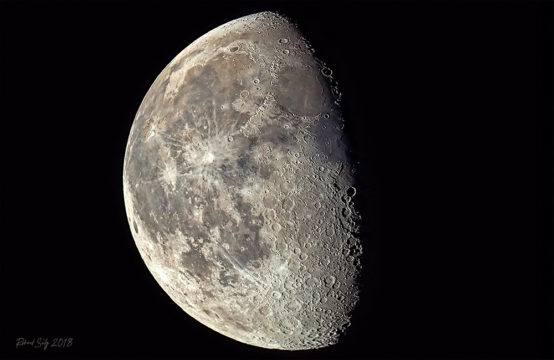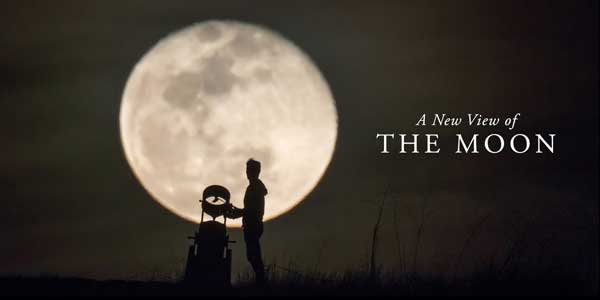Astronomers Without Borders celebrates the night sky in its annual Global Astronomy Month — a month-long collection of online events and in-person gatherings. This year's theme: the Moon.

The Moon – the theme for this year’s edition of Global Astronomy Month (GAM) throughout April – outshines every other celestial object in its ability to inspire. From a bad omen to a sign of love, the Earth’s Moon has been important in cultures throughout the ages. For denizens of brightly-lit modern cities it’s practically the only nighttime object anyone ever notices.
The Moon can also play a role in connecting our planet’s inhabitants. A government minister in Kurdistan, Iraq, told me how, during a visit to California in the US, he was talking to someone in Iraq when they realized they could both see the Moon – rising in California, setting in Iraq. Both saw the same object but from different angles on Earth’s sphere. Always visible from half the Earth’s surface, how many amateur astronomers, poets, lovers, and others gaze at the Moon at the same time?
The Moon may even have played a critical role in the creation of life on Earth because of its large size relative to our planet. There are larger moons in our solar system but they orbit planets that dwarf ours. In Voyager 1’s famous Pale Blue Dot image, Earth is just one bright pixel identified as our home planet. In Cassini’s image looking home from Saturn, Earth and the Moon seen together are unmistakable as a unique planet-moon system.
Global Astronomy Month (GAM) – the world’s largest annual celebration of astronomy – is a unique demonstration of the power of the night sky to bring people together from around the world. Registered events – organized by astronomy clubs, planetariums, and others – pop up on the world map in an array of countries that don’t usually come to mind when thinking of astronomy. GAM is an inspiring expression of the universal passion for astronomy we all share, whoever or wherever we are.
A live program with filmmakers Alex Gorosh and Wylie Overstreet kicked off GAM, focusing on their inspiring new film, A New View of the Moon. The film follows Overstreet – who discovered the rewards of public outreach by accident – at various venues as he shares views of the Moon with passersby. The first-time viewers' “wow moments” include gasps and exclamations that will be familiar to any sidewalk astronomer. It’s the payoff for what we do.

The Moon plays a role in diversity as well. There are tactile versions of the Moon for the visually impaired, and those with very limited sight can still often view its features up close in telescopes. Culturally, the Moon has been female over the last couple millennia – Selene in Ancient Greece, Luna in Ancient Rome. During GAM we’ll explore the Moon’s more modern feminine side through the Virtual Telescope Project as Italian astrophysicist Gianluca Masi and Canadian artist Bettina Forget take us on a special live tour of lunar features named for women. Bettina will follow up with a workshop on sketching these features. Other live online programs, featuring some very special guests, will look at the Moon through art, science, and future exploration.
The Moon has something for everyone – scientist, poet, geologist, artist, explorer. It was likely the midwife to Earth’s early life and has been humanity’s constant companion. The Moon was where we took our first tentative step into the Cosmos. We’ll reflect on all these roles with a variety of programs – to participate in and watch – during Global Astronomy Month 2018.
Check out these links for more information:
Facebook Live with filmmakers Alex Gorosh and Wylie Overstreet
Program Schedule
World Map of Events
Observing Resources
and more!
 0
0









Comments
You must be logged in to post a comment.